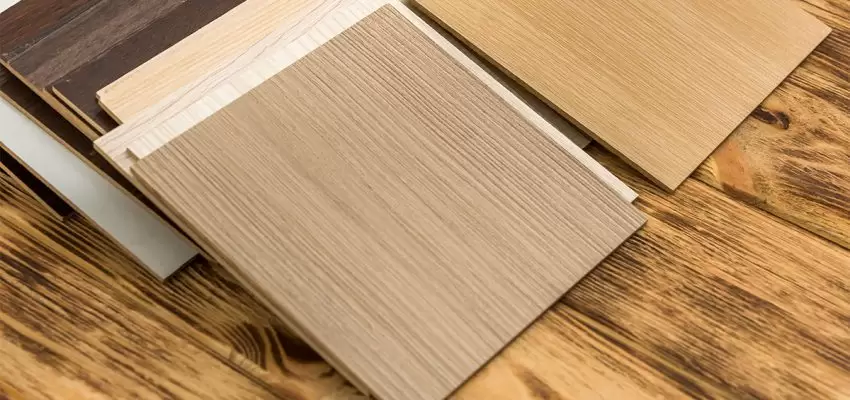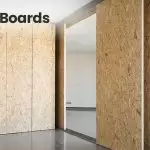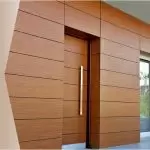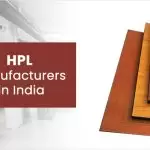High-pressure laminates (HPLs) have become a highly popular building material in recent decades thanks to exceptional durability, easy maintenance, and striking visual options. As a key architectural finishing material, HPLs influence emerging material trends based on expanded styling, application potential, and performance capabilities.
Post your Requirement
What Are High-Pressure Laminates?
High-pressure laminates consist of decorative paper and kraft paper “sandwiches” fused under high heat and pressure with thermosetting resins. These sheets bond to wood, medium-density fiberboard, particleboard, and plastic substrates as veneers for architectural surfaces. The high-pressure pressing makes laminates extremely dense, durable, and scratch-resistant. Special surfacing techniques like texturing or etching create attractive finishes that replicate wood grains, stone patterns, metallic sheens, and more.
HPL Advantages Over Other Materials
What sets HPLs apart from traditional finishing options? Several inherent advantages make HPL an architect favorite:
- Durability – Tough melamine resins withstand heavy day-to-day wear and tear better than lacquers, paints, or stains. HPL stands up to scuffs, moisture, impacts, and more.
- Easy Care – Spills wipe up easily from seamless HPL surfaces. No special cleaners are needed. HPL requires no refinishing, polishing, or resealing over time unlike wood or natural stone.
- Customization – With hundreds of colors/patterns available, HPLs fit any design theme. Special digital printing even enables one-of-a-kind images for personalized spaces.
- Affordability – HPL panels cost far less than comparably sized natural wood or stone. Easier installation also saves labor expenses.
- Sustainability – HPLs utilize abundant, fast-growing woods instead of rare rainforest species. Thermoset resins create highly stable panels that last over decades, avoiding frequent replacements. And HPLs are readily recyclable.
With such outstanding versatility, aesthetics, and eco-friendly pedigree, it’s no wonder HPL’s popularity only increases among forward-thinking architects.
HPL Impact on Kitchen & Bath Design Trends
Kitchen and bathroom settings demand surfaces that thrive despite significant temperature/moisture fluctuations plus heavy day-to-day wear. HPLs handle these conditions beautifully while contributing to trending aesthetics:
- Matte Finishes – Smooth matte HPLs lend understated sophistication and loosely emulate concrete or plaster. Softer matte sheens better disguise routine fingerprints and water spots compared to their glossy counterparts.
- Wood Looks – From pale birch to rich walnut, wood-patterned HPLs infuse natural warmth suited to both modern and traditional schemes. Unlike real wood, HPL resists moisture, and gouges and needs no protective sealing.
- Mixed Materials – Blending HPL, painted wood, glass, and metal finishes create compelling vignettes. Mixing matte and gloss HPL textures adds interest.
- Bold Colors – Vibrant solid color HPLs make dynamic style statements. Red bathroom vanities or citrine yellow kitchen cabinetry brings exciting pops of color.
HPL Impact on Hospitality Design
Public spaces like restaurants, hotels, and offices endure extremely heavy traffic and require durability. HPLs withstand heavy use and still look freshly stylish for years. Adding visual excitement is crucial in hospitality settings to complement branded themes, attract patrons, and enliven environments. Just some trend-driven advantages of using HPLs include:
- Themed Decoration – Custom HPL imagery and graphics help establish unique regional, cultural, or historic narratives. Sourcing local artists and imagery makes spaces distinctive.
- Quick Updates – HPL panels are installed over existing substrates quickly without demolition dust or noise. New HPL skins transform spaces overnight for fast venue refreshes between seasons to retain customer interest.
- Made-to-Order – Bespoke HPL pieces like wall panels, column cladding, and countertops deliver one-of-a-kind touches no off-the-shelf options allow.
HPL Impact on Healthcare Interior Design
Healthcare settings mandate stringent cleanliness and sterility for optimally safe patient surroundings. HPLs satisfy these demands through seamless, non-porous sheets resistant to microbes, moisture, and chemicals. Low-maintenance attributes reduce staff labor requirements and environmental footprint. Healthcare design also focuses on improving patient outcomes through comforting, unintimidating, healing environments. HPLs help create such spaces through:
- Printed Imagery – Photographic artwork and nature imagery produce calming wall décor to distract patients from stress. Prints also provide wayfinding cues outside examination rooms.
- Abstract Textures – Tactile patterned HPL partitions and wainscoting add soothing visual interest to waiting areas without overly exciting pediatric patients.
- Themed Finishes – Healthcare facilities aiming for regional connections or particular historical motifs can create custom HPL finishes that strengthen those ties. Printed HPL murals establish unique personalities.
On the leading edge of architectural finishes, versatile beautiful HPLs will continue influencing design trends for years to come through endless customization opportunities, outstanding performance qualities, and continually emerging application potential.























Post A Comment